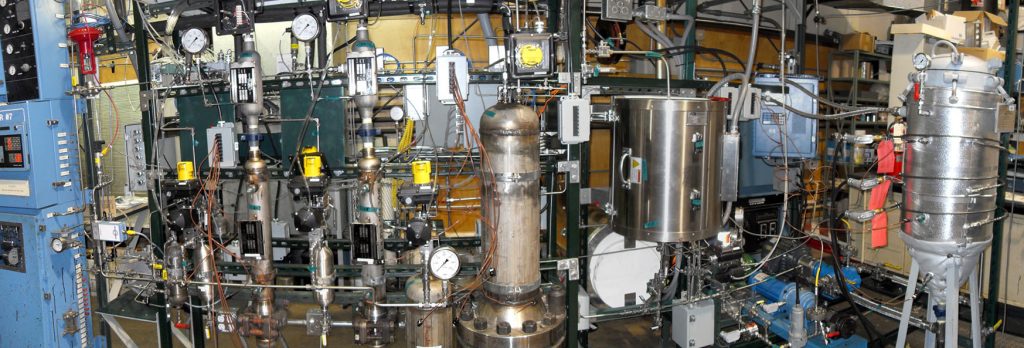
Kinetics in the Coke Drum
Understanding the reaction and kinetics of a system is fundamental to optimizing the system. Coking kinetic studies were thus carried out in a 180-200 g/hr continuous mini-coker facility operated at conditions similar to the industrial delayed coker in order to better understand and characterize the reactions occurring at the industrial scale coker conditions. The products from the thermal reactions in the mini-coker were monitored from 30 minutes to 120 minutes of experiment time.
A four-lump kinetic model was developed from the mini-coker reactor data based on a pseudo-component reaction mechanism. First-order kinetic rate equations were developed for this mechanism based on yields and the material balances then the kinetic rate was expressed in terms of reaction temperature (T), pressure (P), and residence time (tv) for each feed stock. Rate constants and thus activation energies and pre-exponential factors were calculated at 0 & 40 psig. These correlate very well with the feed properties of the feedstock. These correlations have been built into a user-friendly excel model that helps predict the concentration of each pseudo-component as a function of time as well as the total quantity/composition of material in the reactor at each point in time.
This is a predictive model that can give valuable information about the reactivity of resid feedstock in the delayed coker at conditions closely mimicking the industrial delayed coker. It may also be a useful tool for making decisions in the case of an emergency shut in of the coker as well as choosing appropriate conditions to target specific volatile matter content of coke.
The Mild Thermal Cracking Visbreaking Unit (VBU) is used as a tool to evaluate the overall visbreaker performance of various feeds and blends at different operating conditions. It is used to collect data for product yields and furnace fouling.